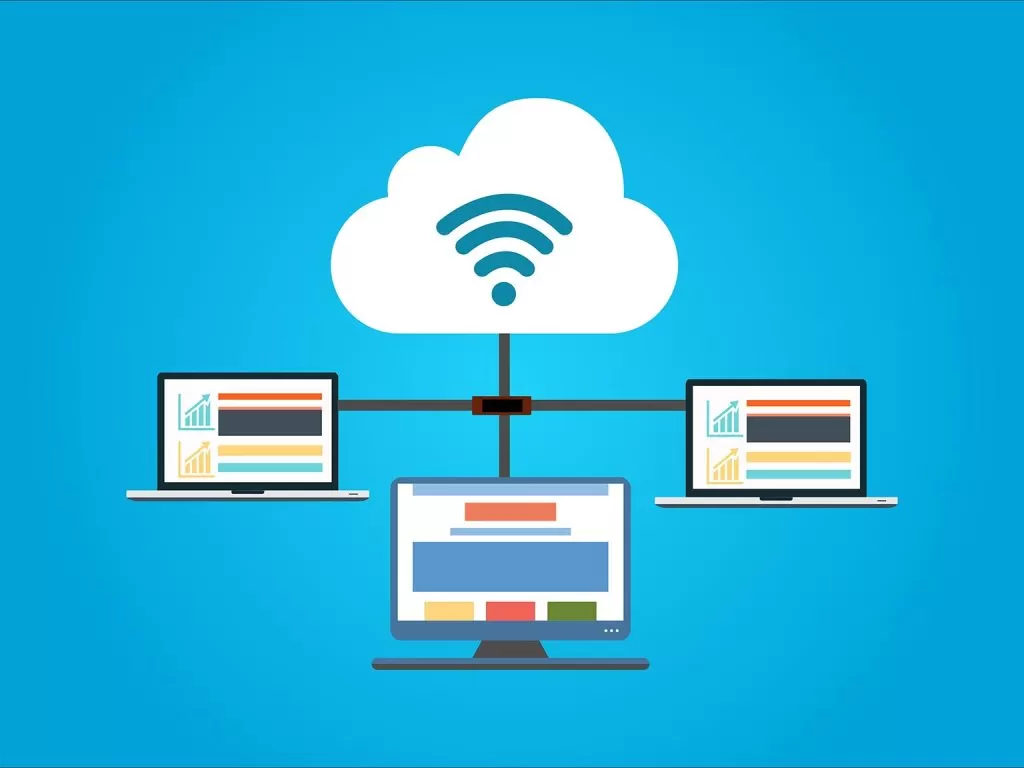Written By:
Scott McAuley
Scott is the IT Director of Texas Management Group, and has been in the IT industry for 25 years.
In an age where data is the lifeblood of every business, ensuring its safety is more critical than ever. That’s why Cloud Data Backup has become a cornerstone of modern IT strategies. But how can you ensure your backups are truly secure and reliable?
By following the best practices for cloud data backup, businesses can safeguard their data while optimizing storage and minimizing risks. With 2024 bringing new challenges and innovations, staying up-to-date is essential.
Ready to strengthen your cloud backup strategy and avoid common pitfalls?
Let’s dive into the 10 best practices for cloud data backup in 2024!
Key Takeaways:
- Adhere to the 3-2-1 rule by keeping multiple copies of your data across different locations to ensure reliable backups.
- Automate disaster recovery processes to reduce human error and ensure quick, efficient responses during outages or emergencies.
- Prioritize data protection by using strong encryption and access controls to safeguard sensitive information from unauthorized access.
- Regularly test and validate backup systems to ensure your data can be restored accurately when needed, preventing potential failures.
- Optimize backup frequency based on data criticality, ensuring that important information is consistently backed up without affecting performance.
Table of Contents
What is Cloud Data Backup?

Cloud data backup is a secure way to store your business data online. It involves copying files to a remote server, protecting them from system crashes, hardware failures, or cyberattacks.
Unlike physical backups, cloud backups are scalable and accessible from anywhere with internet access. This flexibility ensures your business can recover quickly after a disaster or outage.
Security is a key feature, with encryption keeping your data safe from unauthorized access. Cloud backup also reduces the risk of onsite vulnerabilities.
Subscription-based cloud services make it cost-effective for businesses, offering reliable protection without the need for physical storage. In short, cloud backup is a smart way to keep your data safe and accessible at all times.
10 Best Practices for Cloud Data Backup
Ensuring effective cloud data backup is crucial for business continuity.
Here are 10 essential practices to secure and manage your data efficiently:
| Best Practice | Description |
|---|---|
| Adhere to the 3-2-1 Rule | Keep 3 copies of your data, use 2 different storage types, and store 1 offsite. |
| Apply Regular Patches | Update backup systems to enhance security and performance. |
| Prioritize Data Protection | Use strong encryption and access controls to safeguard sensitive data. |
| Automate Disaster Recovery | Automate backups to reduce human error and speed up recovery. |
| Implement Security Protocols | Use encryption and SSL/TLS to secure data transfers. |
| Test and Validate | Regularly test backups to ensure data can be restored accurately. |
| Use Version Control | Track data versions and set retention policies for better management. |
| Optimize Backup Frequency | Balance backup frequency with performance and data criticality. |
| Leverage Intelligent Backups | Use AI and analytics to improve backup efficiency. |
| Consider Remote Storage | Store backups in different locations to ensure disaster resilience. |
1. Adhere to the 3-2-1 Rule
Follow the 3-2-1 rule by having three copies of your data stored in two types of media, with one offsite. This method minimizes risks like hardware failures and disasters.
2. Apply Regular Patches and Updates
Keep your backup systems updated with regular patches. This ensures better security and performance by fixing vulnerabilities.
3. Prioritize Data Protection
Make data protection a priority with encryption and access controls. This prevents unauthorized access and data breaches.
4. Automate Disaster Recovery Procedures
Automate your disaster recovery to reduce manual intervention and human error. This speeds up recovery in case of an outage.
5. Implement Encryption and Security Protocols
Secure your data using encryption and SSL/TLS protocols. This ensures safe communication and storage of your backups.
6. Test and Validate Backup Systems
Regularly test your backup system to ensure your data can be restored. Validating backups prevents surprises during a crisis.
7. Maintain Version Control and Retention Policies
Track different versions of your data and manage how long they are stored. Retention policies help with storage and compliance.
8. Optimize Backup Frequency
Set a backup schedule based on how often your data changes. This balance prevents data loss while maintaining performance.
9. Utilize Cloud Backup with Intelligence
Use intelligent cloud solutions with AI and analytics. This improves backup efficiency and predicts potential issues.
10. Consider Remote Storage Options
Store backups in different locations to protect against regional disasters. Remote storage ensures your data is safe and accessible from anywhere.
7 Advantages of Cloud Data Backup
Cloud data backup offers significant benefits over traditional methods. It enhances security, scalability, and disaster recovery for modern businesses.
Here are 7 advantages of cloud data backup:
1. Scalability
Cloud backup scales effortlessly with your growing data needs. No need to invest in new hardware as your storage expands.
2. Cost-effectiveness
Pay only for the storage you use, eliminating hefty infrastructure costs. This makes cloud backup affordable for all business sizes.
3. Accessibility
Cloud data is accessible from anywhere with internet access. This flexibility supports remote work and easy collaboration.
4. Automation
Automated cloud backups ensure consistency. There’s no need for manual intervention, reducing the risk of human error.
5. Redundancy and Reliability
Cloud services create multiple copies of your data in different locations. This redundancy guarantees quick recovery during data loss.
6. Disaster Recovery
Cloud backup supports rapid disaster recovery. Restoring data after a system failure or cyberattack is faster and more efficient.
7. Security
Cloud backup solutions use encryption and advanced security measures. This ensures that your data remains safe from unauthorized access and cyber threats.
5 Challenges of Cloud Data Backup
Cloud data backup brings many benefits, but it also poses challenges. Understanding these challenges helps organizations prepare and adapt.
Here are the 5 challenges of cloud data backup:
1. Security Concerns
Cloud backup raises security concerns as sensitive data is stored offsite. Trusting third-party providers requires strong encryption and security protocols to protect against breaches.
2. Data Transfer Speed
Backing up large amounts of data can be slow due to internet speed limitations. This can lead to longer recovery times and affect business continuity.
3. Dependence on Internet Connectivity
Cloud backups rely on stable internet connections. Network outages or slow connections can disrupt backup processes and delay data recovery.
4. Compliance and Regulatory Requirements
Industries with strict regulations must ensure their cloud backup provider complies with privacy and security standards. Non-compliance can lead to legal issues and data risks.
5. Vendor Lock-In
Switching cloud providers can be complicated and costly. Organizations must consider the potential for vendor lock-in and choose solutions that offer flexibility.
Cloud Data Backup Options
Cloud data backup offers multiple options based on your organization’s needs. Choosing the right solution ensures your data is safe and easily accessible.
| Feature | Public Cloud Backup | Private Cloud Backup |
|---|---|---|
| Cost | Lower upfront costs | Higher upfront costs |
| Scalability | Easily scalable | Requires manual scaling |
| Control | Limited | High control over data |
| Security | Shared security | Customized security measures |
| Ideal For | General businesses | Regulated industries |
Public Cloud Backup Solutions
Public cloud backup uses third-party providers to store your data. This option is cost-effective and scalable, ideal for organizations of any size.
With public cloud backup, your data is stored on shared infrastructure managed by the provider. This eliminates the need for internal infrastructure, reducing costs and complexity.
Public cloud solutions offer flexibility and easy scalability. However, ensure your provider has strong security measures like encryption and compliance certifications.
Private Cloud Backup Solutions
Private cloud backup creates a dedicated infrastructure for your data. It offers more control and customization, making it suitable for businesses with strict privacy needs.
Private cloud backups can be hosted on-site or by a trusted third-party. This provides greater security but may come with higher upfront and maintenance costs.
Private cloud options are ideal for industries with stringent regulatory requirements. This includes sectors like healthcare or government, where control over data is crucial.
Conclusion
Ensuring your data is secure with cloud backups is critical in 2024 and beyond. By following best practices, such as adhering to the 3-2-1 rule, automating processes, and prioritizing encryption, you can build a robust backup strategy.
The key is to stay proactive—regularly test and optimize your backups to prevent surprises in times of need. Cloud data backup offers flexibility, scalability, and peace of mind, but careful planning is essential.
Ready to take your data protection to the next level? Apply these insights today and secure your digital future.
Let’s continue the conversation on how to strengthen your cloud backup strategy!
Want to Ensure Your Data is Always Protected?
Our blogs have you covered with the latest on backup practices, and our Managed Cloud Services offer secure, managed solutions tailored to your needs.
Protect your business today!
FAQ
What is the Best Practice for Backup Storage?
The best practices for backup storage include keeping multiple copies of data, storing backups in different locations, encrypting sensitive data, and regularly testing backups for integrity and accessibility.
What is the 3-2-1 Backup Rule?
The 3-2-1 backup rule advises maintaining at least three copies of data (original plus two backups), storing backups on at least two different types of media, and keeping one copy offsite to ensure data resilience and recoverability.
What is a Cloud Backup Strategy?
A cloud backup strategy involves backing up data to remote cloud servers hosted by third-party providers, offering scalability, accessibility, and disaster recovery capabilities without the need for physical infrastructure.
How do I Backup my Data to the Cloud?
You can back up data to the cloud by selecting a reputable cloud storage provider, installing their backup software or app, configuring backup settings, selecting files or folders to back up, and scheduling regular backups to ensure data protection and availability.






